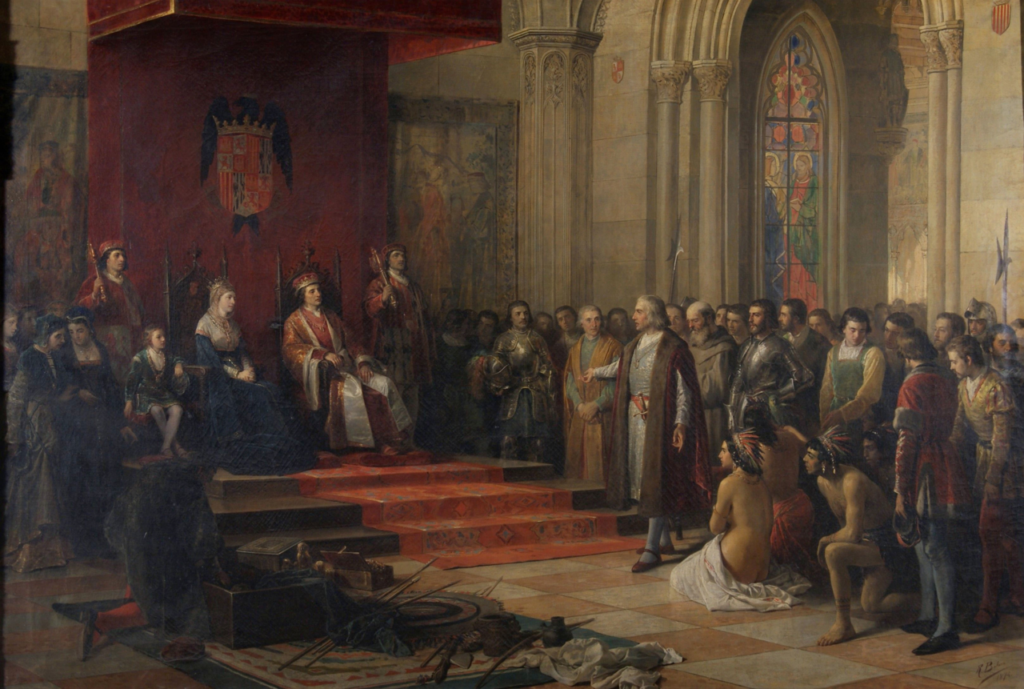
Spurred by the successes of the first voyage, my preparations for a second expedition commenced under the generous auspices of the Catholic Sovereigns. Their pleasure with my previous discoveries had been tempered only by my failure to establish contact with the illustrious civilization of Cipango or to reach the banks of the Ganges. Nevertheless, I convinced them that one more voyage would suffice to bring them the results they craved for. I just need one more I swear!
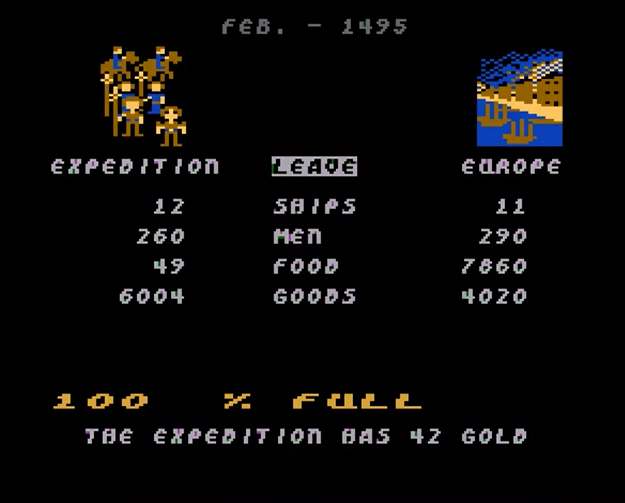
In January of 1496, my fleet – comprising twelve ships manned by 260 stalwart Spaniards – set sail. It carried with it an abundance of goods designed to buy gold and food. The strategy was as before: to skirt the southern coastlines, probing the rivers one after the other.
By March, I had made landfall on the continent once more, albeit further south than previously charted, though still in a region we know.
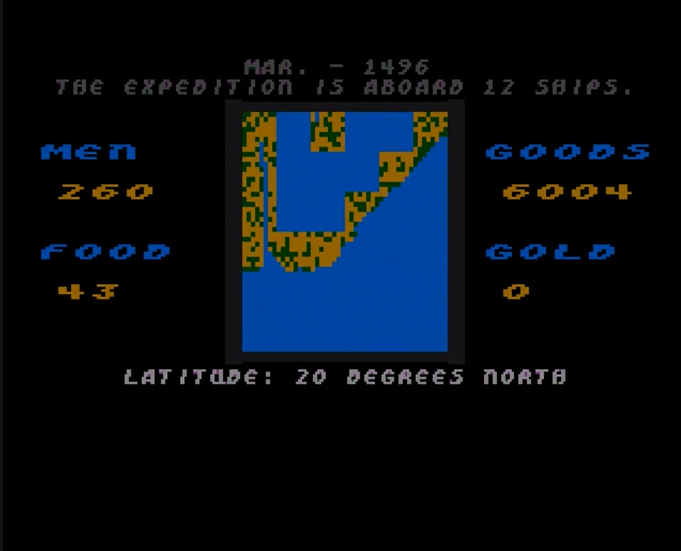
My progress led my fleet to a short river slithering through a vast canyon. Alas, we found no sign of human habitation.
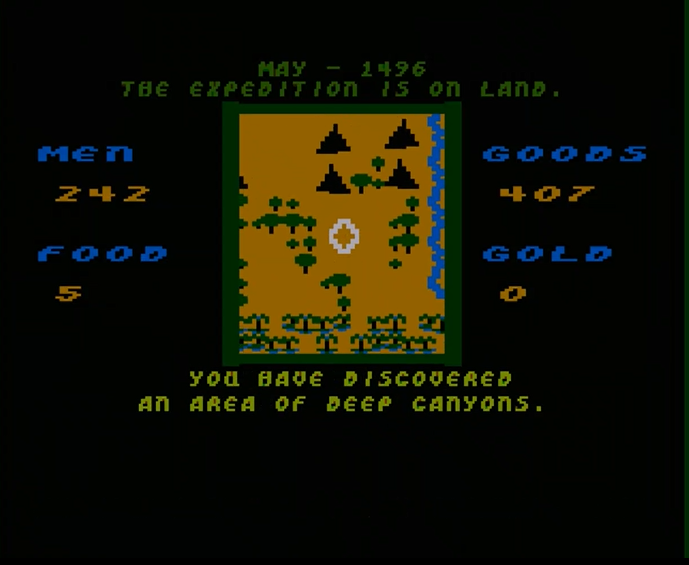
I sailed further to the West, but as I followed the contour of the coast, I soon veered North-West. Am I in a giant gulf?
Navigating further, I eventually discovered another river leading inland:

Here, we encountered villages inhabited by the same primitive civilization we met during the first voyage. Our interactions were peaceful; we traded our goods for food and fully charted the river.
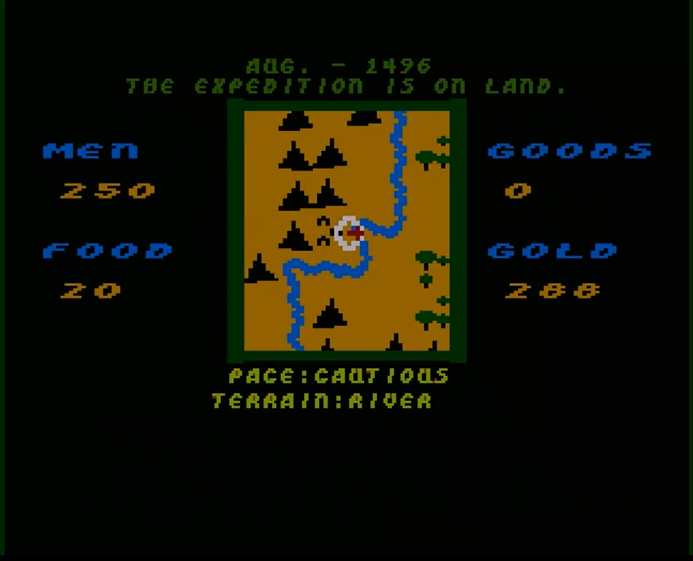
As I resumed our coastal navigation, the route veered North-East, making me suspect that I was not on Cipango’s mainland but on one of its dependent and less civilized islands.
Far to the north, another river was found.
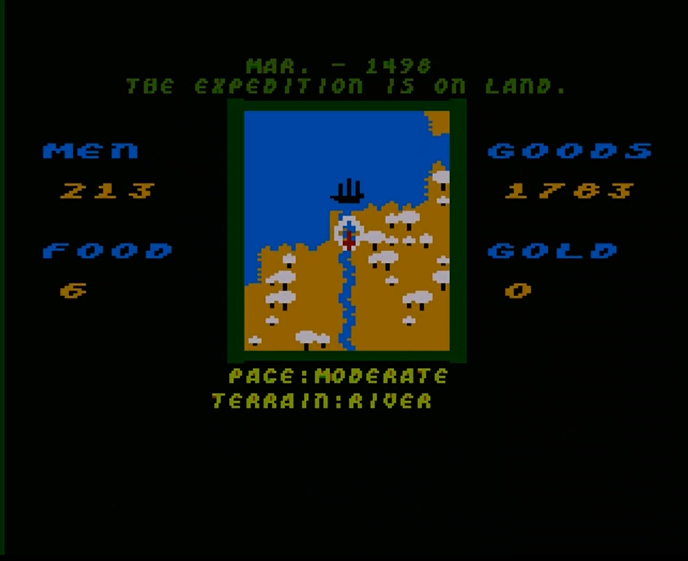
Expecting to engage in trade, I approached a native village with my men. However, the encounter turned sour as the chief fled and his warriors attacked. The skirmish was fierce; we emerged victorious but not without the loss of forty brave Spaniards.
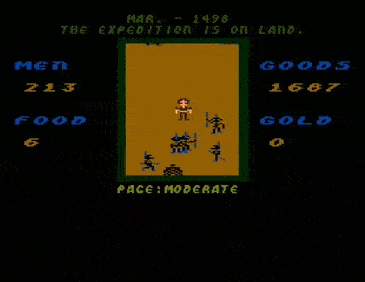
Once the cacique is gone, the only way to exit a village is to win a pointless and long battle.
Since the place has been conquered, I established our first mission in the New World, securing it with supplies sufficient for nearly half a year.
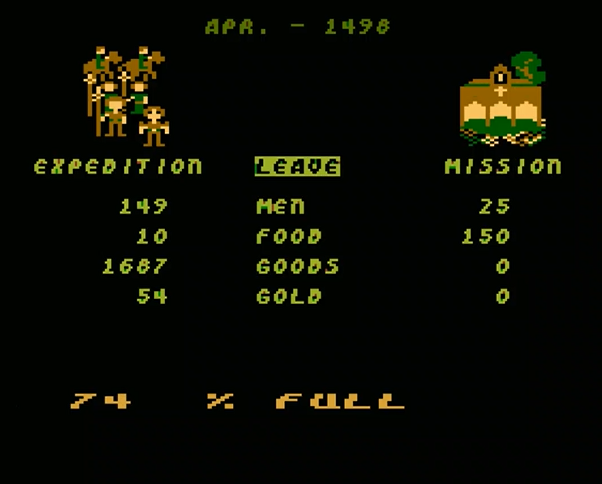
The journey came full circle back to a river North of the one I had used for my first foray in these lands.
I found some natives, who assisted us with bearers and trade. Upstream, I found no one else, until a miraculous discovery:
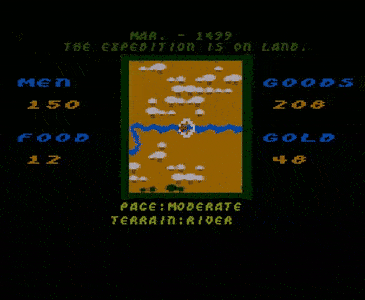
I had stumbled upon one of the mythical cities of gold! The locals, in an unprecedented gesture, bestowed upon us all their treasures. I immediately returned to my ship to offload the gold, but when I went back to fetch more, the city had vanished as if it were a dream, leaving no trace except for the gold in the holds of my ships.
With our circumnavigation complete, I was rich in gold but low on provisions. I embarked for the return journey, and was comforted in the wisdom of this decision when I realized that half of our food had spoiled.

I reached Spain just as our last rations were consumed and we were pondering what’s the best way to cook a cabin boy.
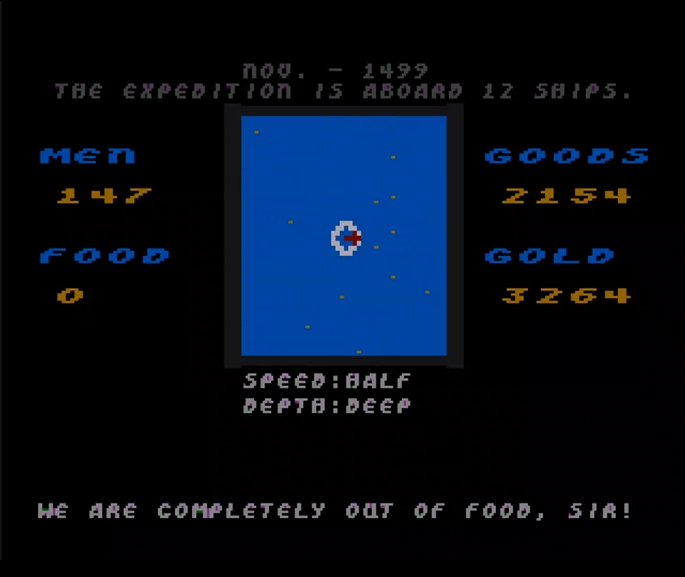
I rushed to the Palace. I was eager to share tales of everything: the gold, the map, the Lost City – certainly the Queen and King would love it…
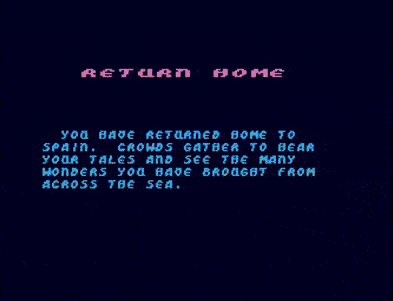
… but well, they had expected more – the Road to the Indias that I may have or have not promised to them.
Returning home, I knew I could take solace in the knowledge that I had explored a New World. Rumors about traders from beyond the southern ocean stirred my curiosity – that’s where Cipango must be, and that’s where my next expedition will aim.
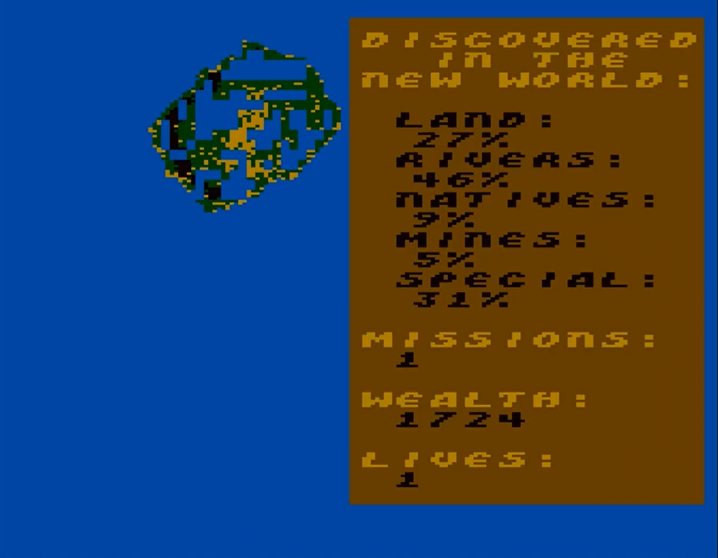
Well, that’s it for the second part of the AAR. No unexpected death this time, and honestly I feel that once you have 250 men you need to make a series of huge mistakes for an expedition to end.
This is the map generated with Kroah’s tool:
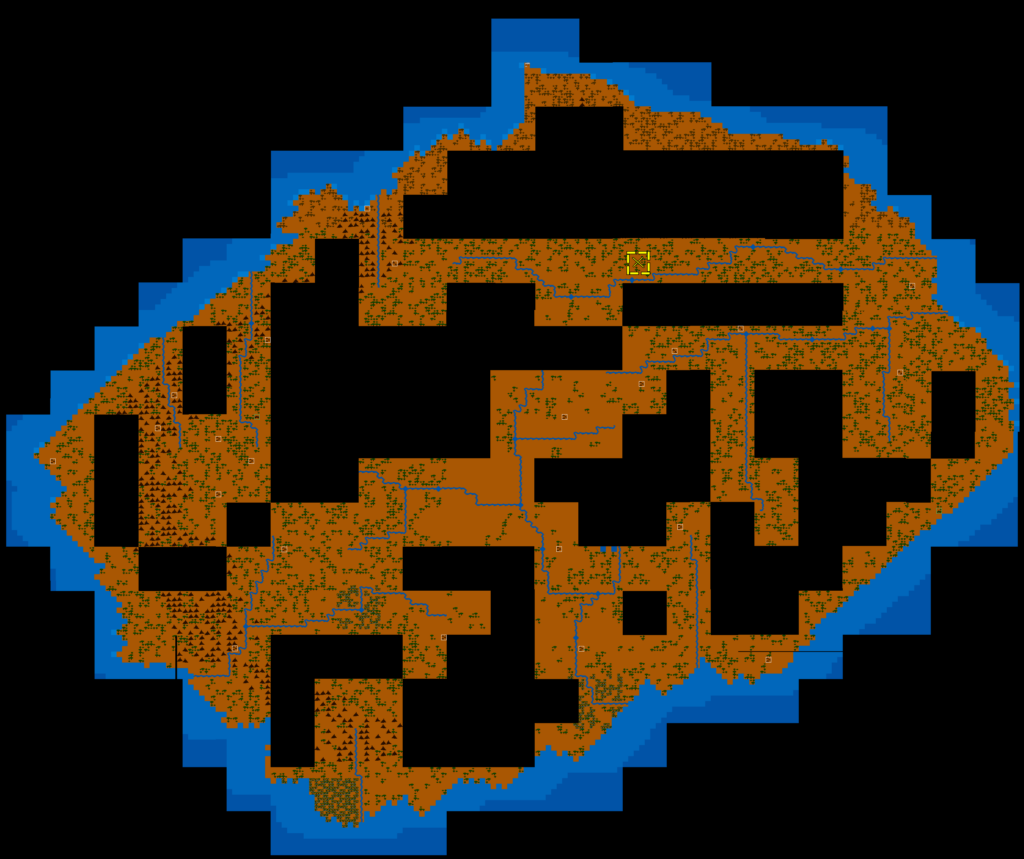
– the island is huge, but relatively poor. I know there must be at least one other island with Aztecs and/or Incas to find, so that will be the third voyage. I am not sure there will be a fourth one, as the gameplay is starting to get repetitive, and it’s not a wargame in the first place.